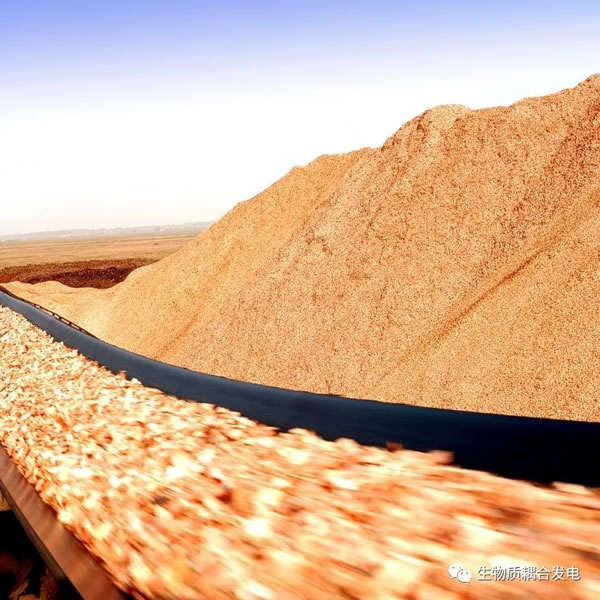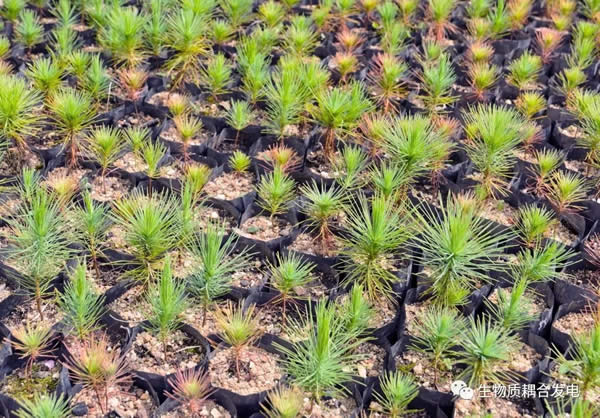Guide: British Drax 6*660MW power plant biomass fuel power generation operation, introduces the operation of Drax power plant from multiple angles and links. Section 9 introduces Drax's 2030 zero (negative) carbon emissions target. This article is the last section of the album, introducing the sustainability of Drax's biomass power generation.
British Drax 6*660MW power plant biomass fuel power generation operation, introduces the operation of Drax power plant from multiple angles and links. Section 9 introduces Drax's 2030 zero (negative) carbon emissions target. This article is the last section of the album, introducing the sustainability of Drax's biomass power generation.

Drax power plant's biomass fuel consumption in 2019 is more than 7 million tons, of which about 2.5% of agricultural waste raw materials, most of which are forestry-related biomass resources. Regardless of the sustainability of biomass power generation from the perspective of the ratio of raw materials or the growth cycle, the focus is on forestry biomass resources. But to this day, there is still no standard definition of sustainability. In essence, sustainable development means not doing anything today that will detract from doing the same for the next generation.
27% of the earth’s land is covered by forests, with a total area of approximately 3.44 billion hectares. In addition to becoming a prominent feature in the global landscape, forests also play an important role in human life: forests make the air in cities cleaner, and absorb CO2 in the atmosphere to emit O2; forests provide biodiversity for wildlife Sex and living habits; forests also provide basic industrial raw materials, such as paper, furniture, building materials and biomass energy. Nearly half of the world's renewable energy comes from forests, in the form of wood fuel. Approximately 2.4 billion people around the world use it for cooking, heating and power generation. In fact, 50% of the current global production of wood products is used for these purposes.
The total energy content of the world's forests is about 10 times the global annual primary energy consumption, which makes forests a very useful resource, helping to meet energy needs in a sustainable and renewable way. Yes, when wood is used as fuel, it releases carbon dioxide (CO2), but in a benign forest or sustainable forest growth system, this carbon will be offset by new tree planting. Therefore, the only emissions from biomass energy utilization are emissions from biomass fuel processing and transportation.
However, biomass resources must be managed sustainably and responsibly. One of the main purposes of International Day of Forests (the United Nations Food and Agriculture Organization in November 1971 confirmed that March 21 is the International Day of Forests) is to encourage people to use forest resources sustainably to ensure that forest resources can be used by future generations. Because biomass fuel is a widely used energy source, it also supports a healthy and vibrant industry, with approximately 900 million people working in the wood energy sector worldwide. More importantly, the local economy based on wood energy can be revitalized through the modernization of biomass raw material processing facilities, thereby stimulating local business activities. Investment in the use of biomass resources contributes to better forest management, which in turn leads to forest growth, increased sustainability, and increased employment.
For centuries, human civilization has relied on forests and forest products: food, wood, building materials, and more. Construction timber refers to the lower and thicker part of the trunk; the smaller part of the trunk can be used for papermaking, compressed board or biomass fuel; residues from the wood processing industry, such as sawdust, bark, wood chips, etc., can also be used as biomass fuel . But in Europe in the 18th century, when the increasing demand for industrialization made development into a state of overspeed, a problem emerged: forests became increasingly difficult to meet social needs. In order to meet the needs of industry, large areas of forest land were cut down, and the total supply was rapidly reduced. Hans Carl von Carlowitz was keenly aware of this challenge, and he was then head of the Saxony Mining Administration. In 1713, he published "Forest Economy", this book advocated the protection and management of German forests, so that they can provide long-term services to industry. Although he drew on existing knowledge from all over Europe, this is the first time he has used an important term: Nachhaltigkeit, the German term for sustainability. Karlovitz explained the new term: “Protecting and planting wood is for continuous, stable and continuous use, because this is an indispensable cause, without which the country cannot continue to exist.”

This can be said to be the beginning of the scientific method of forestry. Although our needs for forests have changed, the same principle is still at the core of how modern forests operate: to ensure that what exists today and what is useful will still exist tomorrow. In order for loggers to optimize the quality and quantity of wood, the forests need to be thinned regularly, and a certain percentage of the forests need to be cut down regularly to help their overall health and vitality process. Thinning means that fewer trees are left competing for the same resources (water, sunlight, soil). In addition, thinning can also provide more light and space for other plants, thereby promoting diversity. It can be used to increase the size and quality of remaining trees, and it can also encourage the establishment of new seedlings where trees are being felled when managing continuous forest cover. The roundwood produced by thinning is usually too small to be sold as wood, but this does not mean it is worthless: it can be sold to the pulp industry for papermaking, or used for particleboard or biomass fuel for power generation-just like in The Drax Biomass Power Plant did. The biomass energy industry also provides a market for low-grade wood that is removed when the mature trees are finally harvested. In areas where there is no market for such low-grade wood, this wood is usually left on-site and becomes a fire risk or insect pest. And a refuge from disease. Too many low-grade materials left on site will also inhibit the regeneration of the next tree crop. Therefore, the market for this material is important to the health of the forest and the value of the land to the forest owner. In addition, with the rise of the Internet, smart phones and e-readers, the paper market has been shrinking. The development of biomass energy can help replace the demand for wood in the papermaking market because biomass fuel can be made from low-grade wood, planing and residues that are not used in construction or furniture. This valuable opportunity provided by the energy sector can clear the site for replanting and provide additional income for forest owners.
Carbon sequestration is directly related to the growth rate of trees-a young, growing tree absorbs more carbon dioxide (CO2) from the atmosphere than an old tree. Older trees store more carbon (after absorbing it in a "childhood"), but if these are not harvested, they are more susceptible to fires, pests and diseases, and carbon absorption plateaus. In a well-managed forest, old trees prepared for sawn timber production can be harvested and replaced with vigorous young trees, and in the process maximize the carbon dioxide absorption potential of the forest. By-products of this process, low-grade wood and wood chips can be used in the pulp and biomass industries, which not only contributes to the health of the remaining forests, but also provides income for foresters, enabling them to invest in the long-term life of their forests.
This album is over.




























